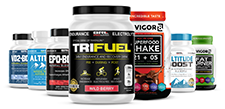Break Through Burnout: When to Take a Training Break

As an endurance athlete, you're no stranger to pushing your body to its limits. Whether you're training for a marathon, triathlon, or cycling event, the physical and mental demands can take a serious toll. While it's natural to want to power through and maintain a rigorous training schedule, ignoring the signs of burnout, also known as overtraining, can have detrimental effects on your performance and overall wellbeing.
Recognizing the Signs of Burnout
Burnout is that overwhelming feeling of physical and emotional exhaustion that comes from excessive and prolonged stress with minimal rest days or breaks from training. For endurance athletes, it often manifests as a combination of mental and physical fatigue. Here are some key signs to watch out for:
Physical Symptoms:
- Persistent muscle soreness or joint pain
- Frequent illnesses or infections
- Disrupted sleep patterns
- Decreased appetite
- Unexplained weight loss or gain
- Increased heart rate during training
Mental and Emotional Symptoms:
- Lack of motivation or enthusiasm for training
- Difficulty concentrating
- Irritability or mood swings
- Feelings of apathy or indifference
- Persistent feelings of disappointment or self-doubt
If you're experiencing a combination of these physical and mental signs, it's a clear indication that your body and mind need to take a break. Pushing through burnout can lead to a greater risk of injury, illness, and long-term performance decline.
The Benefits of a Training Break
While taking time off from your rigorous training schedule may feel counterintuitive, it can actually be the key to feeling better and getting back to it. Here's how a well-timed break can help you bounce back stronger:
Physical recovery: Endurance training places immense stress on your muscles, joints, and cardiovascular system. A break allows your body to fully recover, repair damaged tissues, and replenish energy stores. This sets the stage for more productive, injury-free training in the future.
Mental rejuvenation: The psychological demands of endurance sports can be just as taxing as the physical ones. A break gives your mind a chance to rest, reset, and regain the motivation and focus needed to tackle your training with fresh motivation.
Injury prevention: Burnout often leads to compensatory movement patterns and increased risk of overuse injuries. By taking a break, you can address any imbalances or weaknesses before they turn into bigger problems down the line.
Improved performance: Contrary to popular belief, taking a break from training can actually enhance your athletic performance. Studies show that periodic rest and recovery periods allow the body to supercompensate, leading to greater gains in strength, speed, and endurance.
How to Structure Your Training Break
The length and structure of your training break will depend on the severity of your burnout symptoms, your individual needs, and what your training plan looks like. As a general guideline, most experts recommend a minimum of 1–2 weeks off from high-intensity training. Here's a step-by-step approach to designing an effective training break:
Assess your burnout level: Carefully evaluate the physical and mental signs you've been experiencing. The more severe the burnout, the longer your break should be. It’s not a bad idea to keep a bullet journal during this time to track how you feel.
Adjust your training load: In the weeks leading up to your break, taper your training volume and intensity to allow your body to start recovering.
Focus on active recovery: During your break, engage in low-impact activities like walking, gentle yoga, or light swimming to maintain mobility and cardiovascular fitness without overstressing your body. This isn’t exactly the same as cross training, since the goal isn’t to improve, but can still help you feel rejuvenated and strong when you come back.
Prioritize rest and relaxation: Make sleep, nutrition, and stress management a top priority. Aim for 8–10 hours of quality sleep per night and nourish your body with whole, anti-inflammatory foods like fruits, vegetables, and protein.
Reconnect with your "why": Use this time to reflect on why you started your endurance journey in the first place. Rediscover your passion and let it reignite your motivation. Find sources of inspiration from books or podcasts featuring your favorite sports or athletes.
Gradually return to training: When you're ready to start ramping up your training again, do so cautiously and incrementally. Listen to your body and be willing to adjust your plan as needed. Consider hiring a running coach and integrating more strength training into your routine to mitigate burnout in the future.
By honoring the signs of burnout and taking a strategic training break, you'll not only bounce back stronger but also set yourself up for long-term athletic success. Remember, rest and recovery are just as crucial as the hard work itself.
Take the next step in your training regimen: Try any BRL Sports supplement risk-free! If our natural nutritional products aren’t the best you’ve ever used, simply return your purchase for a 100% refund — no questions asked!
Also in Inspiration & Perspiration

High Altitude Supplements: Complete Guide to Training & Prevention (Altitude Sickness Solutions)
Support endurance and reduce altitude stress with supplements that improve oxygen efficiency, stamina, and recovery in high-altitude conditions.

Best Supplements For Runners: Complete Guide By Training Phase (Base, Peak, Taper & Race Day)
Discover the best supplements for runners by training phase—base, peak, taper, and race day—to boost endurance, recovery, and performance.

Creatine for Endurance vs. Sprint Efforts
Creatine isn’t just for power—learn how it boosts sprint speed, recovery, and endurance performance.


